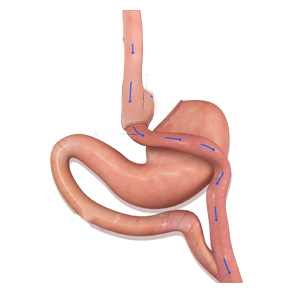Gastric Bypass

This procedure aims to reduce the amount of calories absorbed from your food whilst helping you to feel full after eating smaller meals. This happens in two ways: by restricting the capacity of your stomach, and by bypassing part of your digestive system.
This surgery is performed laparoscopically - the surgeon staples the top of the stomach to create a small pouch (about 15mL capacity) partitioning it from the lower part of your stomach. The stomach pouch is then connected directly to the middle portion of the small intestine, bypassing the rest of the stomach and the upper portion of the small intestine.
In addition to reducing the capacity of the stomach, which restricts the amount you can eat and reduces your appetite, gastric bypass surgery reduces calorie absorption as food bypasses the rest of the stomach and the upper part of the small intestine.
It also causes dumping syndrome (feeling dizzy and lightheaded if you eat too much carbohydrates or sweets due to food high in sugar passing quickly from the stomach pouch into the remaining small intestine) that will also help deter from food overindulgence.
This procedure is considered permanent but it is reversible if required.

